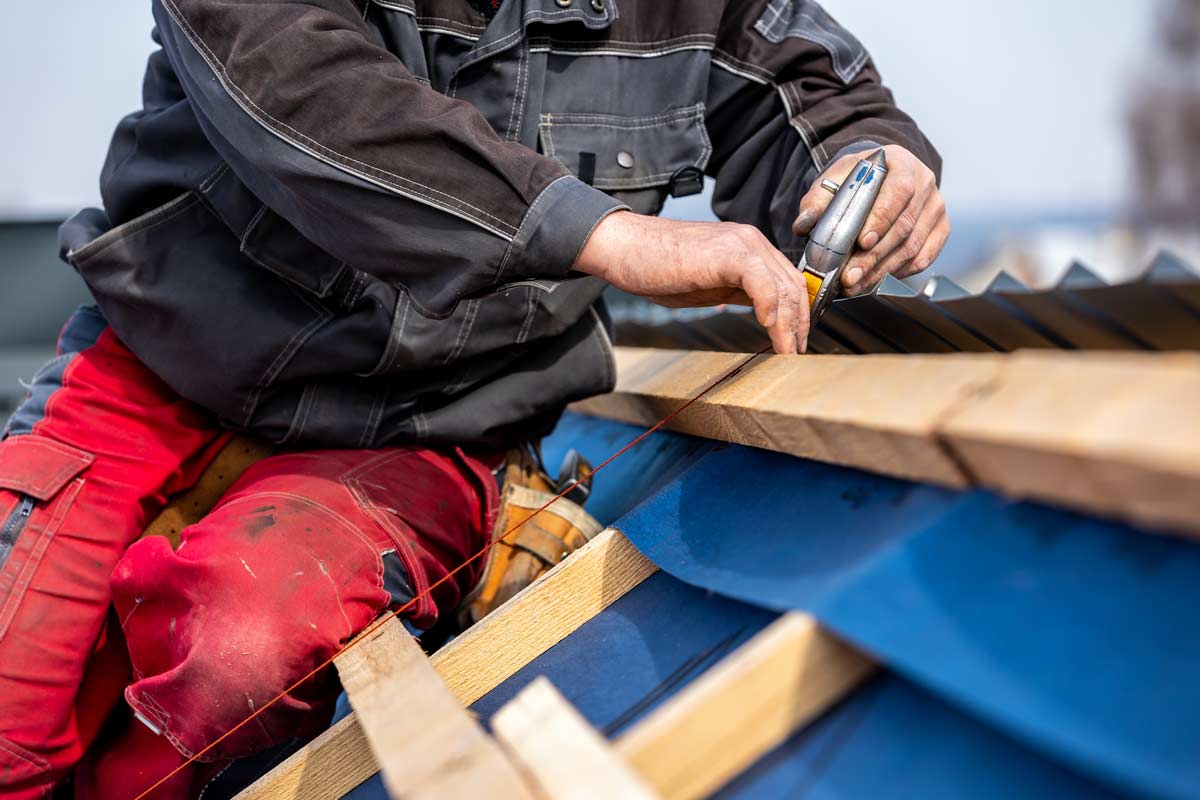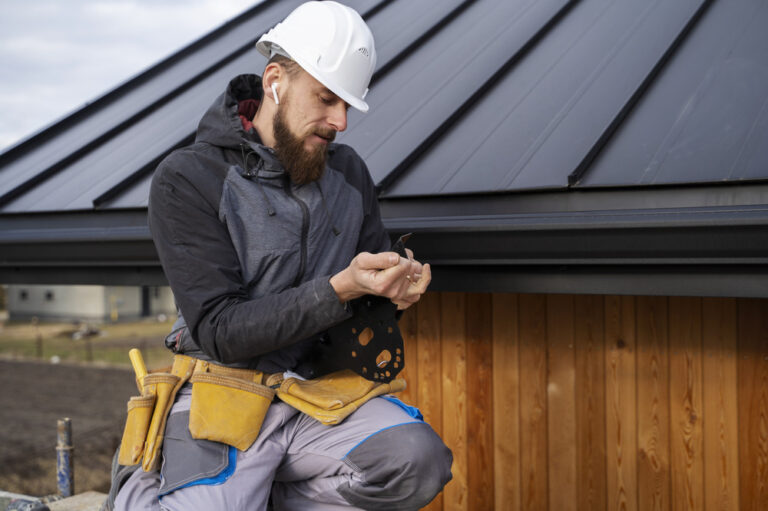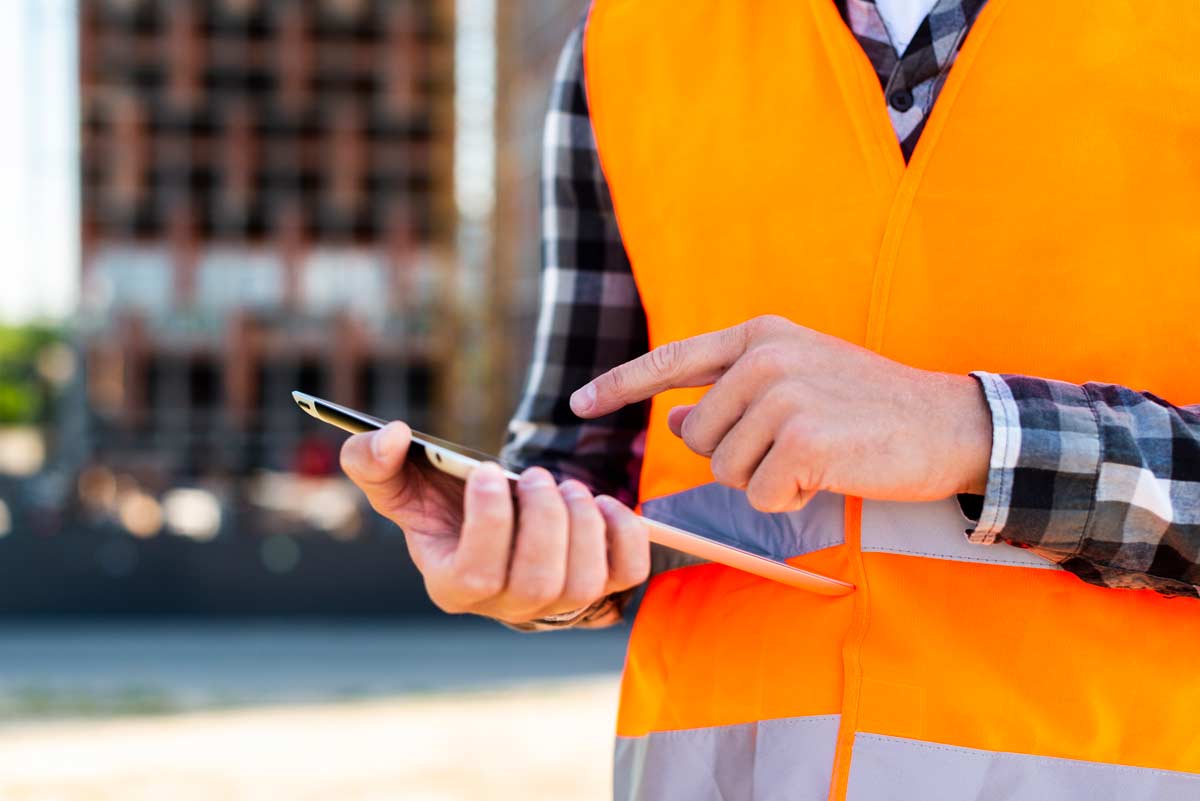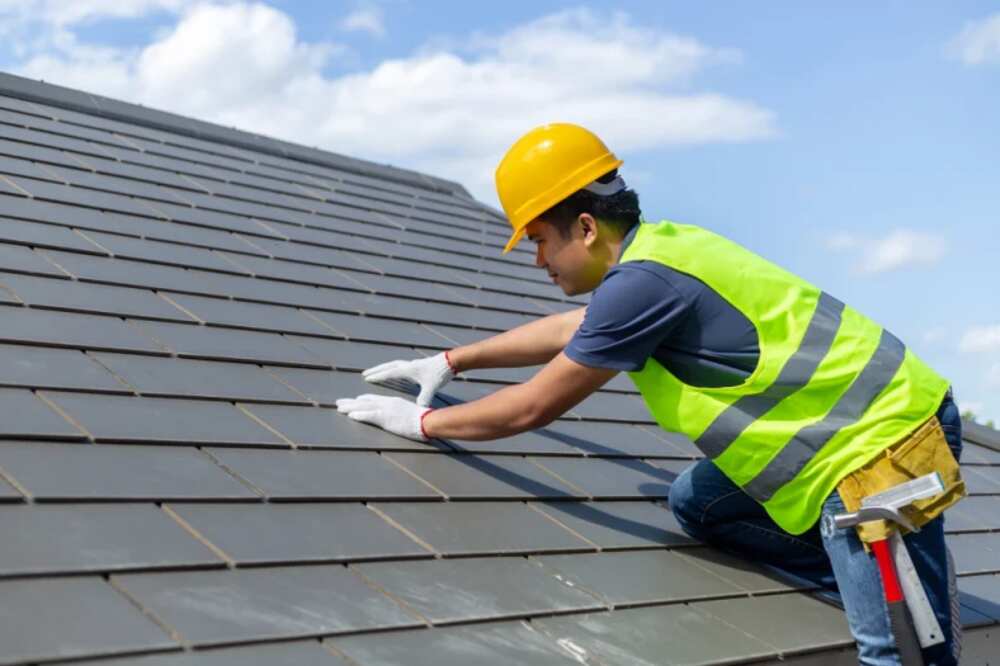
Why a Professional Roof Inspection Is a Must Before Buying a Home
Buying a home is one of life’s biggest milestones, but hidden roofing problems can turn a dream purchase into a costly repair project. A worn, leaking, or poorly installed roof may not reveal itself during a quick walkthrough or even a general inspection. That’s why a specialized home roof inspection is essential for spotting issues that could compromise safety, efficiency, or resale value down the line.
Here are five reasons a professional roof assessment should be a top priority before closing the deal.
Table of Contents
Key Takeaways
✔ A professional home roof inspection reveals hidden issues that aren’t visible during a basic walkthrough.
✔ Roofing problems can add thousands in repair costs if not identified before closing.
✔ Not all general home inspectors are qualified to perform a thorough roof assessment.
✔ Buyers should hire licensed, independent experts for reliable roof inspection services.
✔ Moisture damage, poor ventilation, and aging materials often go unnoticed without a full inspection for roof issues.
✔ Detailed inspection reports support smarter negotiations and better purchase decisions.
✔ Spotting early red flags during showings can help prioritize homes worth further roof assessment.

5 Critical Reasons to Schedule a Roof Inspection Before Buying a Home
1. Hidden Damage Isn’t Always Obvious
A roof might look fine from the curb, but serious problems can hide beneath the surface. Cracks, leaks, and weak spots often go unnoticed until damage spreads inside the home. A professional home roof inspection uncovers these risks before they lead to costly repairs or safety issues.
What Professional Roof Assessment Uncovers
- Undetected Leaks and Moisture Intrusion: Leaks often start small, forming under flashing, around chimneys, or beneath damaged shingles—areas not easily visible to the untrained eye. Inspectors use tools like thermal imaging and moisture meters to detect hidden water intrusion that could lead to mold, wood rot, or ceiling collapse if ignored.
- Structural Weakness in the Roof Decking: Roof decking can weaken over time due to age, previous leaks, or poor ventilation. An inspector walks the roof to identify soft spots, sagging sections, or areas with compromised support that could signal serious structural deterioration and the need for reinforcement or partial replacement.
- Concealed Ventilation Problems: Inadequate ventilation traps hot, moist air in the attic, causing shingles to blister, wood to warp, and energy bills to rise. During a roof assessment, professionals examine ridge vents, soffit vents, and exhaust systems to ensure airflow meets code and prevents long-term deterioration.
2. Repair Costs Can Shift the Price Tag Fast
Most buyers focus on the sale price, but a neglected roof can add thousands in unexpected costs after closing. A thorough inspection for roof damage helps buyers see the true cost of ownership and negotiate smarter before signing. Skipping this step can lead to financial surprises that stretch far beyond the initial budget.
How Roof Issues Affect More Than Just Curb Appeal
- Accurate Repair Estimates Help Avoid Overpaying: Without knowing the roof’s real condition, buyers risk committing to a home that needs a full replacement within a year. A detailed roof assessment gives contractors a clear scope of work, helping buyers ask for credits or repairs during negotiations.
- Minor Problems Can Become Major Expenses: A small flashing issue or a few missing shingles might seem harmless, but left unchecked, they can cause leaks, insulation damage, or mold—each adding thousands in remediation. Catching these problems during the home roof inspection keeps repair costs manageable and predictable.
- Loan Approval or Insurance May Depend on the Roof’s Condition: Some lenders or insurers will not approve financing or coverage if the roof is in poor shape. When a certified professional provides roof inspection services, buyers have documented proof to back financing or adjust their purchase plans early on.
3. Not All Roofs Are Built—or Maintained—Equally
Even if a roof looks new, it doesn’t guarantee quality or proper installation. Materials vary, and shortcuts taken during previous repairs or DIY upgrades can cause future issues. A roofing professional knows how to inspect a roof to help separate well-maintained roofs from ones with hidden flaws.

Why Roof Inspection Services Expose Long-Term Risks
- Poor Workmanship Isn’t Always Visible: Fast, low-cost roof jobs often skip critical steps like proper flashing or underlayment. A professional inspection for roof condition evaluates installation quality, not just surface appearance.
- Material Lifespan and Compatibility Issues Come Up: Not all materials age the same or work well together. An inspector checks if the roof system includes mismatched shingles, incompatible sealants, or older materials nearing the end of their life.
- Maintenance History Leaves Clues: Signs of patchwork repairs, layered shingles, or temporary fixes tell a story about how the roof has been treated. A qualified roof inspection services provider reads these signs and flags long-term reliability concerns.
4. Safety Hazards Can Be Easy to Miss
Beyond water damage, roofs can pose real safety risks that aren’t obvious at first glance. Weak decking, loose flashing, or hidden structural shifts can threaten not only the home’s stability but also the safety of those living in it. A home roof inspection identifies hazards that protect both the property and its future occupants.
Why Safety Starts With a Professional Roof Assessment
- Hidden Structural Failures Increase Collapse Risk: If the roof deck is weakened by water damage or rot, it may not support added weight from snow, heavy rain, or even a contractor walking across it. Inspectors probe decking strength and note areas that fail to meet structural safety standards.
- Chimney and Skylight Leaks Can Compromise Indoor Air Quality: Moisture seeping around chimneys, skylights, or vent pipes often creates mold in walls and ceilings. A detailed inspection for roof damage includes flashing, seals, and transitions—common trouble spots missed in basic walkthroughs.
- Electrical and Fire Hazards From Roof Leaks: Water entering near electrical lines or attic lighting can corrode wiring or trigger shorts. Knowing how to inspect a roof will often uncovers signs of long-term water intrusion in areas where safety risks escalate quickly.
5. Smart Buyers Use Inspection Results to Negotiate
A thorough home roof inspection doesn’t just uncover problems—it gives buyers a tool to make more informed, confident decisions. Whether it leads to renegotiated price, repair credits, or walking away from a risky property, the report empowers buyers with facts, not guesswork.
How Roof Inspection Services Support Smarter Negotiations
- Detailed Reports Add Leverage in Price Talks: A written inspection report with photos makes it easier to request seller credits or repairs. Having third-party documentation from certified roof inspection services adds credibility to the buyer’s position.
- Contingency Clauses Rely on Timely Information: Roof problems discovered late in the process can delay closing or nullify financing terms. A timely roof assessment gives buyers space to use their inspection window effectively and adjust the offer if needed.
- Helps Buyers Walk Away When Necessary: Sometimes, the roof issues are too expensive or risky to take on. A professional inspection for roof damage provides the facts needed to make that tough call before it becomes a costly mistake.
How to Spot Early Roof Issues Before Hiring an Inspector
While a professional home roof inspection is essential before buying, buyers can still keep an eye out for early warning signs during showings or walkthroughs—especially since the national average cost for a roof replacement ranges from $5,700 to $16,000.
These surface-level clues won’t replace a certified roof assessment, but they can help identify homes that need closer attention. Knowing how to inspect a roof early allows buyers to prioritize which properties are worth pursuing and plan ahead for roof inspection services.

1. Look for Shingle Curling, Cracking, or Bald Spots
Shingles should lie flat against the roof and appear intact. If shingles are curling at the edges, cracked down the middle, or missing large amounts of granules, it often signals aging materials or weather damage. These visible issues suggest the need for a deeper roof assessment by a licensed inspector.
2. Check for Stains or Discoloration on Interior Ceilings
Brown rings or water marks on ceilings inside the home are a strong indicator of roof leaks. Even if the stain looks dry, it may point to ongoing water intrusion from damaged flashing or underlayment. Any visible sign like this should trigger a professional inspection for roof damage.
3. Look Around Chimneys, Skylights, and Vents for Gaps or Rust
Areas where the roof meets other structures—like chimneys or skylights—are prone to leaking if flashing is loose, rusted, or missing. These spots often go unchecked, but they play a key role in water sealing. A buyer noticing such issues should rely on roof inspection services to evaluate the extent of damage.
4. Examine the Gutters for Granule Buildup or Rust
Granules from asphalt shingles may wash into the gutters when the roof is wearing down. While some granules are normal for a new roof, large amounts often signal advanced shingle deterioration. This small clue can signal the need for a complete home roof inspection.
5. Spot Sagging or Uneven Rooflines
A roof should maintain a straight, level profile from end to end. If there are visible dips, warps, or uneven areas, it could indicate weakened decking, moisture damage, or poor structural support. These are red flags that demand immediate attention from a certified roof inspection services provider.

6. Look for Moss, Algae, or Plant Growth
Dark streaks or green patches may seem cosmetic, but moss and algae often hold moisture against the shingles. Over time, this speeds up material decay and invites further damage beneath the surface. A trusted professional should perform a thorough roof assessment to determine how far the problem has spread.
How to Choose the Right Roof Inspector Before Buying
Not all inspectors offer the same level of skill, detail, or service—and with the global roofing market projected to grow at an annual rate of 5.5% through 2033, the demand for qualified professionals continues to rise.
When it comes to something as critical as a home roof inspection, it’s important to hire someone with the right credentials, experience, and tools. These six tips help buyers find a professional who delivers a thorough, unbiased roof assessment:
1. Look for Licensing and Insurance
A qualified roof inspector should be licensed in their state and carry both liability insurance and errors & omissions coverage. This protects both the buyer and the inspector in case of missed damage or onsite accidents. Without these credentials, a buyer has little recourse if the roof inspection services fall short.
2. Ask About Specific Roofing Experience
Not all home inspectors are roofing experts. A professional with a background in roofing—whether as a contractor, specialist, or inspector—will know what problems to look for in different materials, pitches, and designs. Experience makes the difference between a generic checkup and a detailed roof assessment.
3. Review a Sample Report First
Before booking an inspection, request a sample report to see how detailed their findings are. A good report will include photos, moisture readings, material conditions, ventilation notes, and clear recommendations. A vague or overly simple report doesn’t provide enough insight for a sound home purchase or a complete inspection for roof safety.
4. Ask What Tools They Use
Reliable roof inspection services often go beyond a ladder and flashlight. Tools like moisture meters, drones, and infrared cameras help identify issues hidden beneath the surface. The right equipment shows the inspector is thorough and up to date with industry standards.
5. Read Reviews and Ask for References
Online reviews and word-of-mouth feedback can reveal patterns in an inspector’s professionalism, communication, and follow-through. Look for consistent praise in areas like detail, honesty, and willingness to answer questions. A strong reputation adds confidence to any home roof inspection decision.
6. Confirm Independence From Roofing Contractors
Some inspectors work directly with roofing companies and may push unnecessary repairs. A truly independent inspector offers an unbiased evaluation and doesn’t profit from the outcome. Buyers should choose roof inspection services that provide objective reports—nothing more, nothing less.

Reading and Understanding a Roof Assessment Report
A detailed roof assessment report can feel overwhelming at first glance, especially for first-time homebuyers. But learning how to interpret the findings makes it easier to understand what’s urgent, what’s cosmetic, and what to ask the seller. With a little guidance—and the right professional by their side—buyers can make smart decisions based on what the report actually says.
1. Start With the Overview or Summary Section
Most home roof inspection reports include a top-level summary that outlines the roof’s general condition. This section highlights key issues, from major structural concerns to minor wear and tear. It’s a quick way to grasp the roof’s overall health before diving into the technical details.
2. Review the Materials and Installation Notes
This part of the report explains what type of roofing material is installed, its age, and whether it appears to be installed correctly. Notes might flag missing flashing, exposed fasteners, or signs of improper workmanship. A professional inspection for roof problems will always call out installation shortcuts that could lead to long-term issues.
3. Look Closely at Moisture or Leak Detection Findings
Inspectors use moisture meters or infrared tools to find signs of water intrusion—especially in attic spaces, around chimneys, or beneath surface materials. If readings show high moisture levels, this could indicate active leaks, hidden mold, or insulation damage. A buyer should rely on professional roof inspection services to explain the severity and next steps.
4. Check the Ventilation and Drainage Details
This section covers attic airflow and how the roof manages water runoff through gutters, downspouts, and slope design. Poor ventilation can shorten the roof’s lifespan, while clogged or broken gutters can cause water to back up under the shingles. A good roof assessment explains how well the system functions and if improvements are needed.
5. Pay Attention to the Inspector’s Recommendations
Toward the end of the report, inspectors usually list next steps—often labeled as “repair,” “monitor,” or “replace.” This helps buyers separate immediate concerns from minor issues that may not require action right away. Clear, honest recommendations are a hallmark of quality roof inspection services.
6. Don’t Skip the Photos and Diagrams
Visuals in the report show exactly where problems exist and often include captions with condition notes. These images make it easier to communicate with the seller or a contractor if repairs are needed. Any thorough home roof inspection should include photographic documentation to support its findings.
Frequently Asked Questions (FAQs)
Yes, a roof can still pass a home roof inspection if it’s older, as long as it’s in good condition with no active leaks, sagging, or major damage. Inspectors focus on function and safety—not just age. However, an older roof may still be noted as nearing the end of its lifespan in the roof assessment report.
In most cases, a roof assessment is not legally required to close, but lenders or insurers may request one if the roof appears questionable. Even when not mandatory, scheduling roof inspection services helps buyers avoid expensive surprises after closing. It’s a preventive step that supports informed decision-making.
If the home roof inspection reveals serious problems, buyers can request repairs, negotiate a price reduction, or walk away if the contract includes an inspection contingency. The report gives leverage to address the issue before finalizing the sale. A failed roof assessment doesn’t end the deal—it opens the door for smart negotiation.
Most roof inspection services range from $150 to $500, depending on the roof’s size, accessibility, and complexity. Some may cost more if thermal imaging, drones, or detailed reports are included. For many buyers, the peace of mind from a quality roof assessment far outweighs the upfront cost.
Yes, buyers are usually welcome to attend the home roof inspection, and many inspectors even encourage it. Being present allows buyers to ask questions and see issues firsthand. It’s a great opportunity to learn more about the roof’s condition beyond what’s written in the roof assessment report.

Get Trusted Roof Inspection Services from Roofing Experts of Hyde Park
At Roofing Experts of Hyde Park, we know what’s at stake when buying a home in Hyde Park, NY. Our licensed inspectors deliver detailed, honest roof assessments that reveal what photos and walkthroughs can’t. Whether it’s uncovering hidden leaks, spotting poor workmanship, or verifying long-term durability, our home roof inspection process gives buyers the clarity they need to move forward with confidence. No pressure, no guesswork—just expert insight you can count on.
Let us help protect your investment before you sign on the dotted line. Contact us today!
